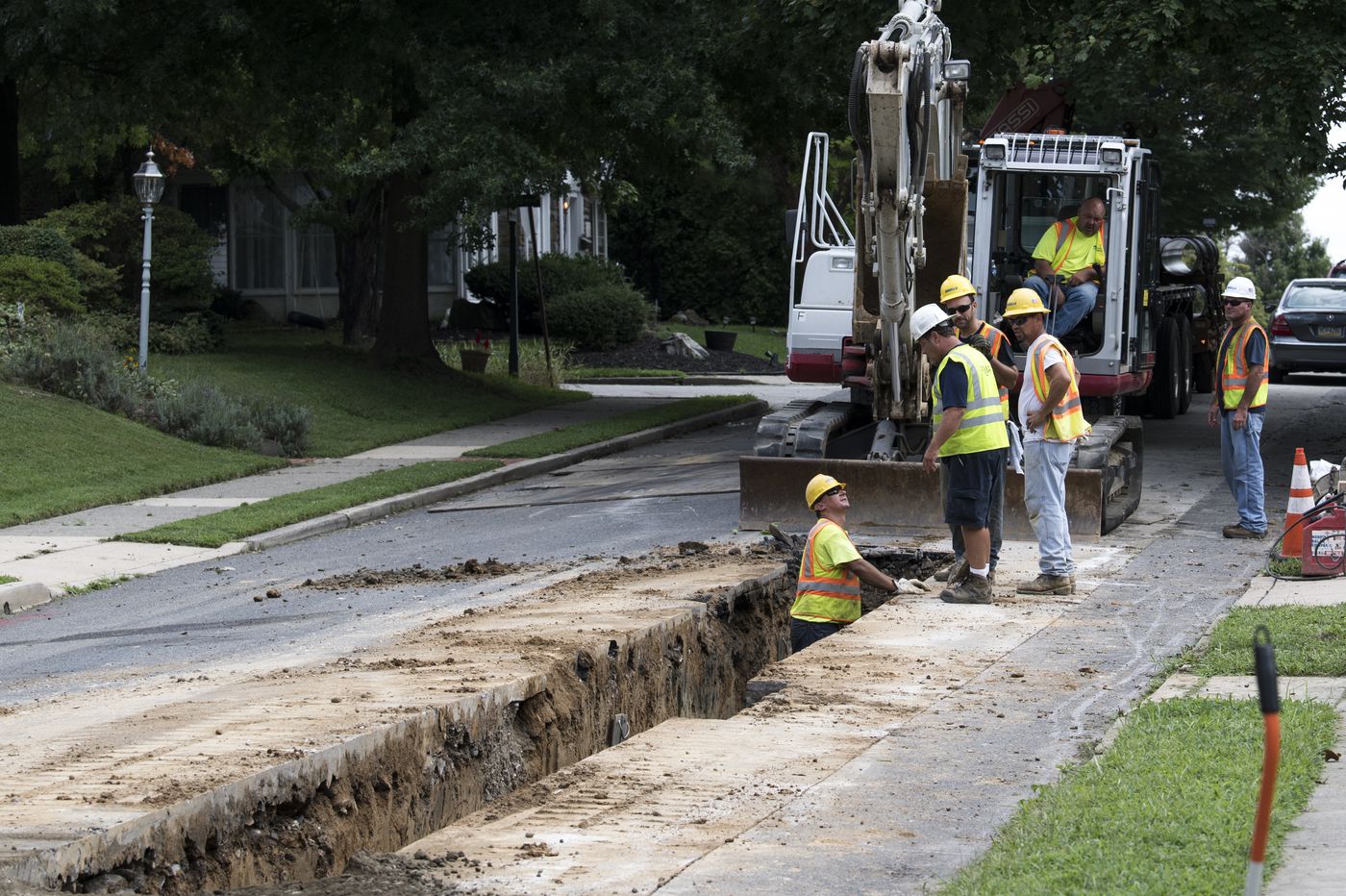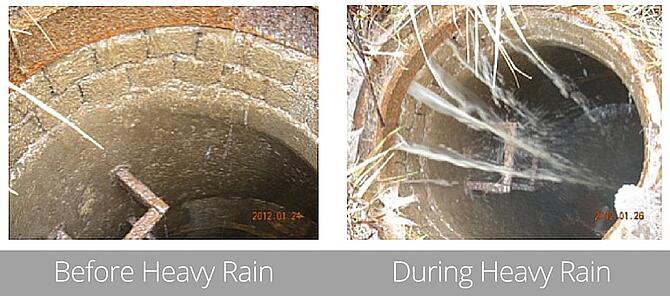Upper Darby, faced with failing sewers, adds pipe inspections before home sales
Upper Darby Township will require homeowners in the most populous municipality in the region outside of Philadelphia to have their sewer lines inspected before selling their property, a move Realtors called ineffective at solving the township’s problems with an aging sewer system and untimely given real estate challenges caused by the coronavirus pandemic
Sewer pipe inspections cost a few hundred dollars and repairs can cost thousands, which would put a strain on sellers and could make selling homes more expensive and difficult, especially as the pandemic disrupts the housing market
Township officials said they were looking out for the interest of buyers, making sure that what is likely one of the biggest purchases of their lives does not include surprise sewer problems. A growing number of municipalities are passing or considering similar laws
So far this year, the township has spent about $75,000 on overtime pay for sewer maintenance workers, he said. The township’s director of licenses and inspections said several sewer backups occur each week due to the old and overwhelmed system, sometimes spewing wastewater onto streets and sidewalks. Sometimes the sewer main is the problem, and sometimes it’s the laterals.
The Suburban Realtors Alliance, based in Chester County, calls Upper Darby’s ordinance a Band-Aid, estimating that the approach means the township will inspect 1% to 2% of sewer laterals each year.

Most Important Manhole Inspection Items
Often times, I’m asked “When is it important to complete manhole inspections?” Manhole inspections should be performed during wet weather, or when the groundwater level is at its peak. Ideally, November to May is the best time to perform manhole inspections to detect inflow & infiltration (I/I). With the snow/ice melt in February and March compounded with heavy rains, Cities and Towns will notice flows spike at lift stations and wastewater treatment facilities.
The Manhole Chimney During Heavy Rain
One of the most important manhole components to observe during a manhole inspection is the manhole chimney. As you can see below, this manhole was constructed of precast concrete, with the exception of the manhole chimney which was constructed of brick. During dry weather the chimney may appear to be in good shape; but when the groundwater rises or heavy rains occur, you may see a different story entirely. It is often hard to believe you are looking at the same manhole, under slightly different conditions. For reference, the inflow that was observed to the right was entering at a rate of approximately seven gallons per minute.
Struck During Final Grading
It is always a good idea to have a construction inspector on site during sanitary manhole installation. Additionally, a trained Construction Inspector should complete a final inspection and sign off prior to the Muncipality or Utility taking over responsibility of the sewer system. After construction, there is typically a three-year maintanace bond and inspection that should take place, but this is often times forgotton. I have frequently seen frame and covers offset due to being struck during final grading, or as a result of not being properly marked in fields that are worked by farm machinery. If these manholes are located in low-lying areas, the amount of inflow could be catastropic to your sewer system. Below are three photos of manholes that were struck during the final grading and never corrected by the utility.
Properly Stacked Out
Far too often, I come across sanitary sewer manholes that were not properly stacked out during construction. Most utilities and municipalities have a set of plans, specifications, and details that contractors are to follow during construction. Contractors are to supply the muncipality shop drawings to indicate what product they are installing. In many cases, for whatever reason the details and/or specifications are not adhered to, which will result in a poor final product, resulting in I/I entering the system.The photo to the left is an example of the use of brick, stone, etc. for grade adjustment, in lieu of the proper concrete adjusting ring.The photo in the center is of an O-Ring gasket that was not secure during manhole installation. The O-Ring is designed to help maintain a water tight seal at the joint. The photo to the right is an active joint leak due to an inadequate amount of Kent Seal and/or failure to apply the proper amount of butyl rubber/plastic wrap on the exterior joint. All of these deficiencies can result in infiltration entering the sanitary system.
Rubber Boot
One of the most common observations is a leaking pipe penetration. When a new manhole is constructed, a rubber boot should be installed on the precast manhole to facilitate installation of the sewer pipe. This boot is tightened with stainless steel bands to maintain a water tight seal. Many times, concrete is placed around the pipe in lieu of the rubber boot and the result is active infiltration at the pipe penetration as shown in the photo to the left and right. The photo in the center shows a rubber boot installed, but not tightened adequately, causing continuous active infiltration at the pipe penetration.

Camera Sewer Inspection
When your pipes are clogged, broken, cracked or otherwise damaged, it can be difficult to find the cause of the issue and the location of the problem area. Leaving your pipes damaged can not only be dangerous for your home; it can also be hazardous to your health. Pipes that are leaking can disrupt the soil around your home, making the foundation shift and causing structural damage, and pipes that are clogged can become breeding grounds for harmful bacteria that can contaminate your water.
The Solution: Detection
No matter what the problem is, camera inspection can help to find the cause and location of the problem. We do this by lowering a camera down the pipe to see exactly what has affected it. There are a number of things that can damage your pipe including tree roots, leaks, clogs and broken pipes. Once we have identified the cause, we can watch a live video of the problem and determine the best way of dealing with it.
We can also use the camera to determine the exact location of the problem, as the camera is equipped with locators that can help us to pinpoint the area precisely. After we have successfully found the problem and the location of it, we can get started on hydrojetting or mechanical cleaning to get rid of it for good so that it won’t cause any more problems in the future.

Things to Look For in an Inspection Crawler
Even in uncertain times, essential sewer services have to be maintained. When capital budgets at the municipal and state levels are under threat, cities increasingly turn to contractors to inspect and maintain wastewater infrastructure. The challenge for contractors is getting equipped to seize the opportunity.
Crawler inspection is a core service for any sewer contractor. Cities need to know the condition of wastewater infrastructure, and inspections reveal where cleaning and rehab work is needed — potentially offering additional opportunities for service revenue. An inspection crawler is a major investment, and the system chosen will ultimately have a significant impact on long-term productivity and profitability.
To make the process easier, Envirosight compiled guidance from contractors on the top 10 factors they consider when making a crawler purchase decision.
Agility. To complete more inspections, a contractor needs the ability to maneuver past obstacles. Choose a steerable design that can navigate around obstructions like rocks and protruding taps, and insist on all-wheel drive to power through sediment and grease. A compact wheelbase (with three or more axles) will assist in climbing over offsets and debris
Versatility. Contractors encounter a wide range of pipe sizes, materials and conditions. A modular crawler design can adapt to these challenges. Look for a complete selection of wheels and plug-and-play accessories — preferably ones that can be changed rapidly without tools

SEWER LINE REPAIR
When it comes to the sewer line repair in your home, you want to make sure that everything is working the way that it should. A lot of people have issues with their sewer lines or toilets clogging and find that they need additional plumbing services. When they do, they contact our experts at Petri Plumbing to get the job done. We will be able to repair and even replace sewer lines if there is an issue with them. By doing this, your home will be more sanitary and comfortable for you and your loved ones.
WHAT IS A VIDEO SEWER INSPECTION?
A video sewer inspection is when our team of experts uses a very thin and flexible camera that is put throughout the length of the drain that you have at home. This camera will be able to pinpoint the source of your piping issues without having to conduct any invasive excavations. The sewer inspection, when done with a video camera, can inform the technician of basically anything that is going on inside of the line itself
WHAT ARE SIGNS OF SEWER SYSTEM ISSUES?
When it comes to the sewer for your home, there are a variety of things to look out for. One thing to look for is if you are having a lot of backflow, issues flushing the toilet, or clogged drains, all of these situations are signs of possible sewer problems. Also, if you notice a lot of pooling water in the yard, or if you notice a burst pipe or a sewer line in the basement is leaking, the line will probably need to either be repaired or replaced
WHAT IS A SEWER CLEANOUT?
A sewer cleanout can be a great thing for you to have done at home because it takes care of any drain clogging problems that you happen to be dealing with. Cleaning out the sewer involves both the septic tank and the sewer line itself. At Petri Plumbing, will be able to clean out the lines of any build-up or serious clogs.